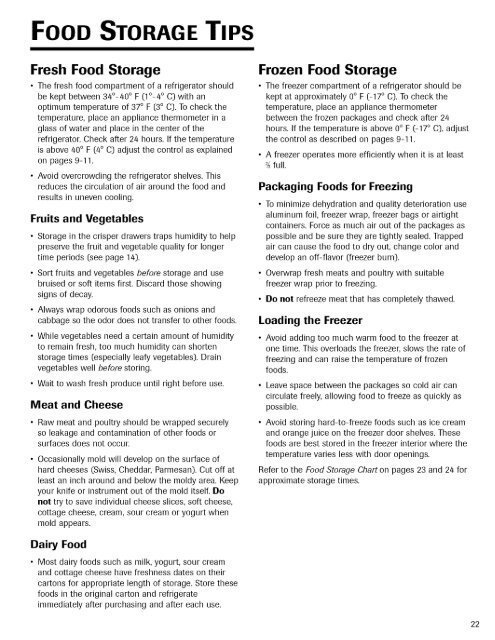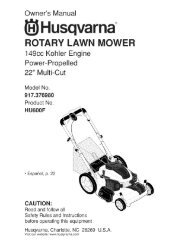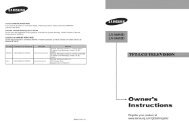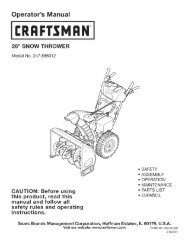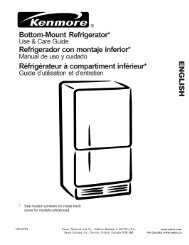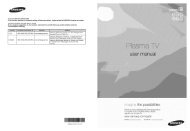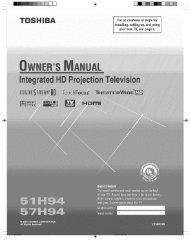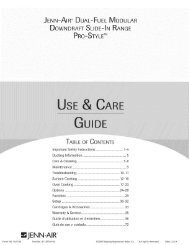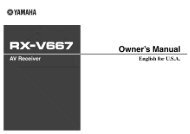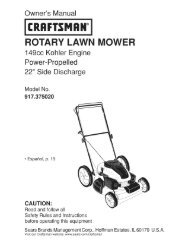Control de temperatura - ManageMyLife
Control de temperatura - ManageMyLife
Control de temperatura - ManageMyLife
Create successful ePaper yourself
Turn your PDF publications into a flip-book with our unique Google optimized e-Paper software.
FOOD STORAGE TIPs<br />
Fresh Food Storage<br />
• The fresh food compartment of a refrigerator should<br />
be kept between 340-40 ° F (1°-4 ° C) with an<br />
optimum temperature of 37° F (3° C). To check the<br />
temperature, place an appliance thermometer in a<br />
glass of water and place in the center of the<br />
refrigerator. Check after 24 hours. If the temperature<br />
is above 40° F (4° C) adjust the control as explained<br />
on pages 9-11.<br />
• Avoid overcrowding the refrigerator shelves. This<br />
reduces the circulation of air around the food and<br />
results in uneven cooling.<br />
Fruits and Vegetables<br />
• Storage in the crisper drawers traps humidity to help<br />
preserve the fruit and vegetable quality for longer<br />
time periods (see page 1/4).<br />
• Sort fruits and vegetables before storage and use<br />
bruised or soft items first. Discard those showing<br />
signs of <strong>de</strong>cay.<br />
• Always wrap odorous foods such as onions and<br />
cabbage so the odor does not transfer to other foods.<br />
• While vegetables need a certain amount of humidity<br />
to remain fresh, too much humidity can shorten<br />
storage times (especially leafy vegetables). Drain<br />
vegetables well before storing.<br />
• Wait to wash fresh produce until right before use.<br />
Meat and Cheese<br />
• Raw meat and poultry should be wrapped securely<br />
so leakage and contamination of other foods or<br />
surfaces does not occur.<br />
• Occasionally mold will <strong>de</strong>velop on the surface of<br />
hard cheeses (Swiss, Cheddar, Parmesan). Cut off at<br />
least an inch around and below the moldy area. Keep<br />
your knife or instrument out of the mold itself. Do<br />
not try to save individual cheese slices, soft cheese,<br />
cottage cheese, cream, sour cream or yogurt when<br />
mold appears.<br />
Dairy Food<br />
• Most dairy foods such as milk, yogurt, sour cream<br />
and cottage cheese have freshness dates on their<br />
cartons for appropriate length of storage. Store these<br />
foods in the original carton and refrigerate<br />
immediately after purchasing and after each use.<br />
Frozen Food Storage<br />
• The freezer compartment of a refrigerator should be<br />
kept at approximately 0° F (-17 ° C). To check the<br />
temperature, place an appliance thermometer<br />
between the frozen packages and check after 2/4<br />
hours. If the temperature is above 0° F (-17 ° C), adjust<br />
the control as <strong>de</strong>scribed on pages 9-11.<br />
• A freezer operates more efficiently when it is at least<br />
2/_full.<br />
Packaging Foods for Freezing<br />
To minimize <strong>de</strong>hydration and quality <strong>de</strong>terioration use<br />
aluminum foil, freezer wrap, freezer bags or airtight<br />
containers. Force as much air out of the packages as<br />
possible and be sure they are tightly sealed. Trapped<br />
air can cause the food to dry out, change color and<br />
<strong>de</strong>velop an off-flavor (freezer burn).<br />
• Overwrap fresh meats and poultry with suitable<br />
freezer wrap prior to freezing.<br />
• Do not refreeze meat that has completely thawed.<br />
Loading the Freezer<br />
Avoid adding too much warm food to the freezer at<br />
one time. This overloads the freezer, slows the rate of<br />
freezing and can raise the temperature of frozen<br />
foods.<br />
• Leave space between the packages so cold air can<br />
circulate freely, allowing food to freeze as quickly as<br />
possible.<br />
Avoid storing hard-to-freeze foods such as ice cream<br />
and orange juice on the freezer door shelves. These<br />
foods are best stored in the freezer interior where the<br />
temperature varies less with door openings.<br />
Refer to the Food Storage Chart on pages 23 and 2/4 for<br />
approximate storage times.<br />
22


